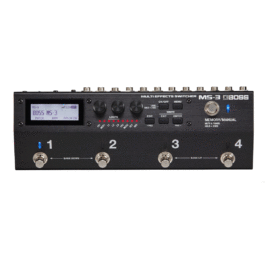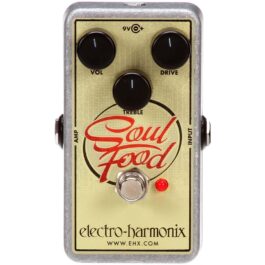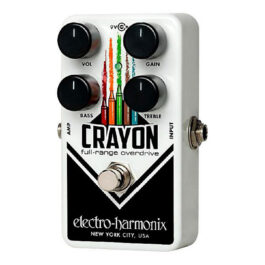
Top 5 Guitar Buzz Words
Top 5 Guitar Buzz Words

If you’re a musician, or hang around musicians (especially guitarists), chances are you’ve noticed that when they get talking, you’ll start hearing words like Transparent, Glassy, or True Bypass.
If you, at times, find yourself a little lost on their meaning, don’t stress… you’re forgiven, and you’ve come to the right place. We speak Guitarist, and we’re here to help. Here are the definitions for our Top 5 Guitar Buzz Words.
1. Transparent
This is a great place to start, as it’s probably the most straightforward definition. When a musician refers to something like an effect pedal as “transparent”, they mean the effect the pedal is applying allows you to retain your initial tone, and add to it, rather than completely change it. In other words, you can hear “through” the pedal, leading us to the term transparent.
2. Glassy
The term “glassy” is sometimes confused with “transparent”, but it is quite different. A sound or tone that is very clean and crisp, is often referred to as glassy.
3. True/Buffered Bypass
This is a slightly more complicated one, as it’s often the topic of hot debate, but we’re not going to get into that here, we’re just going to stick to the definitions. This relates to effect pedals and the way they’re wired to turn off. When your guitar signal enters a pedal, it runs through circuitry that affects the tone, and outputs the new signal on the other side. When the pedal is turned off, the signal needs to be re-routed around that circuitry, and there are two major ways of doing that; true bypass, and buffered bypass.
Buffered Bypass uses a FET transistor. This transistor communicates with the circuit and tells it to re-route the signal electrically. This means the signal does still pass through the circuit to some degree, while turned off.
True bypass uses a mechanical switch to totally isolate the connection to the effect circuit, and send the signal straight back out, without it contacting the effect circuit whatsoever.
4. Effects Loops
This is usually in reference to amplifiers, and refers to a routing which allows you to add effects at a specific point in the chain. This is usually found in between the pre amp, and the power amp. This allows you to insert things such as time-based effects (delay, reverb etc.) after the power amp, allowing those time-based effects to act on the tone put out by the power amp, rather than the other way around.
5. Warm
This is probably the number one contender for “Words you’ll hear musicians say”, and while at times misused, its meaning is actually quite simple. A “warm” tone is generally boosted in the low and low-mid range frequencies, and accentuates second order harmonics without sounding muddy (another common buzzword, used when a tone doesn’t sound clear).
Shop Now for your new tone shaping tool
-
Birthday Sale Deal!
-
Birthday Sale Deal!
- Guitar & Bass, Guitar Compact Pedals, Guitar Effects
Boss MS-3 Multi Effects and Switcher Pedal
-
R16,450R11,515FREE DELIVERY - Select options
-
- Out of Stock
- Guitar & Bass, Guitar Effects, Guitar Compact Pedals
Electro-Harmonix Soul Food Overdrive Effects Pedal
-
R2,095R1,780FREE DELIVERY - Select options
-
-
- Out of Stock
- Guitar & Bass, Guitar Effects, Guitar Compact Pedals
Electro-Harmonix Crayon 69 Full-Range Overdrive Effects Pedal
-
R1,550R1,320FREE DELIVERY - Select options
-
-
- Out of Stock
- Guitar & Bass, Guitar Amps
Fender Hot Rod Deluxe™ IV Guitar Combo Amp
-
R36,595R31,105FREE DELIVERY - Select options
-
Like this article?
GET MORE LIKE IT SENT TO YOUR INBOX
with our weekly email newsletter.
Leave a comment
You may also like


Why YOU should play the Ukulele!











